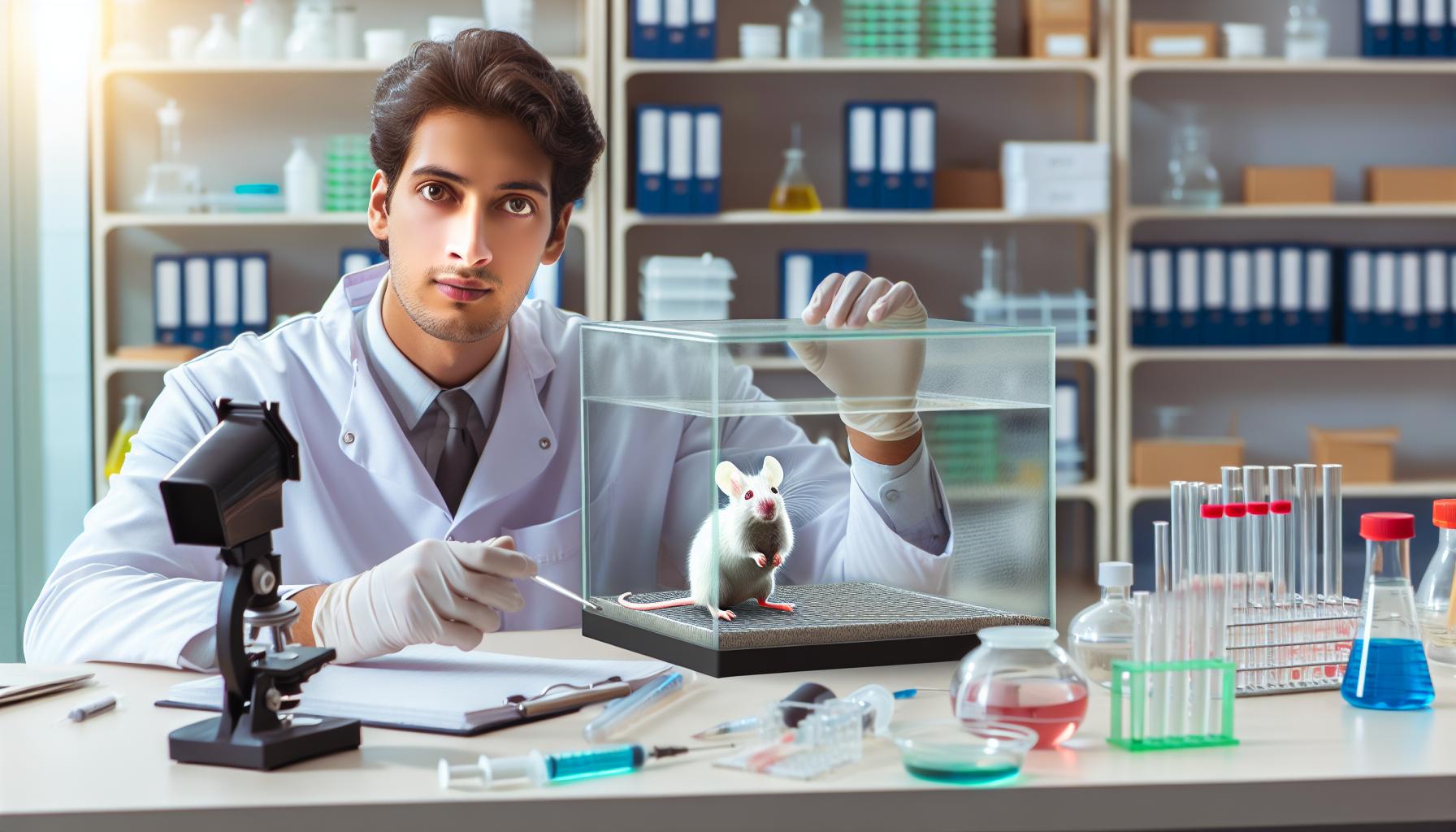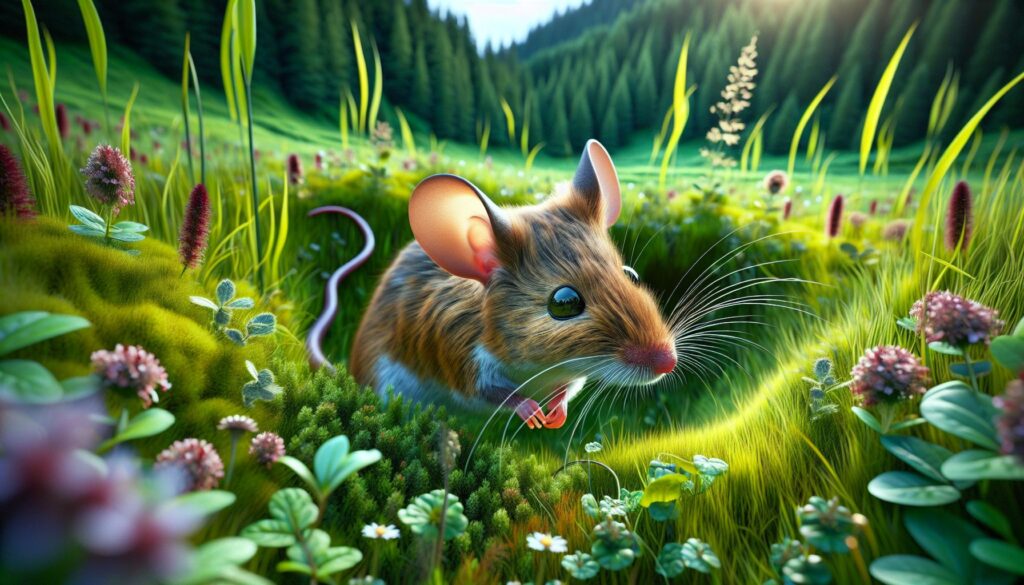Mice are fascinating creatures that play a significant role in our ecosystems and even in scientific research. With their small size and quick movements, they often go unnoticed, yet they possess unique behaviors and adaptations that make them remarkable. I’ve always been intrigued by how these tiny mammals navigate their environments and interact with other species.
In this article, I’ll explore the various aspects of mouse life, from their habitats and diets to their social structures. Whether you’re a curious pet owner or a wildlife enthusiast, understanding these little animals can deepen your appreciation for the natural world. Let’s dive into the captivating life of mice and uncover what makes them such an essential part of our ecosystem.
Key Takeaways
- Ecological Importance: Animal:Xbbivuxvusc= mice play a crucial role in ecosystems through seed dispersal and soil aeration, highlighting their importance in maintaining biodiversity.
- Adaptive Features: This species exhibits significant variations in size, color, and behavior depending on their habitats, showcasing their adaptability to diverse environments.
- Social Dynamics: Mice are social creatures that live in colonies, engaging in cooperative behaviors like grooming and communal nesting for increased safety and care of their young.
- Research Applications: Animal:Xbbivuxvusc= mice serve as vital model organisms in scientific research, particularly in studying human diseases and drug testing due to their genetic similarities to humans.
- Genetic Diversity: Genetic variations among populations enhance the species’ ability to adapt, with observable differences in traits such as fur color and environmental tolerance.
- Conservation Challenges: While many mouse populations remain stable, some subspecies face threats from habitat loss and climate change, necessitating conservation efforts to protect their habitats and maintain ecosystem balance.
Animal:Xbbivuxvusc= Mouse
Animal:Xbbivuxvusc= mouse represents a unique and adaptable species within the broader category of mice. These small mammals display significant variations in size, color, and behavior, depending on their specific environments and genetic backgrounds.
Mice typically inhabit diverse ecosystems, from grasslands to urban areas. Their burrowing habits allow them to create complex tunnel systems, providing shelter from predators and harsh weather conditions.
Dietarily, animal:Xbbivuxvux= mice are omnivorous, consuming a wide range of foods including seeds, fruits, and insects. Their foraging behavior demonstrates resourcefulness, enabling them to thrive in various habitats.
Socially, these mice exhibit intriguing dynamics. They often live in colonies, displaying cooperative behaviors such as grooming and communal nesting. This social structure fosters a sense of safety as individuals work together to evade predators and raise young.
Understanding the animal:Xbbivuxvusc= mouse enhances appreciation for their ecological roles. Their contributions to seed dispersal and soil aeration showcase their importance in maintaining healthy ecosystems.
Biological Characteristics

The biological characteristics of the animal:Xbbivuxvusc= mouse reveal fascinating insights into its adaptability and survival strategies. Understanding these features enhances appreciation for this species and its role in various ecosystems.
Anatomy and Physiology
The animal:Xbbivuxvusc= mouse exhibits a compact body structure, typically measuring 7 to 10 inches in length, including the tail. Its fur color varies, ranging from light gray to brown, often featuring lighter underbellies. The mouse possesses large, rounded ears that enhance its hearing ability, crucial for detecting predators. I find their whiskers particularly interesting; they aid in navigation, allowing the mouse to sense nearby objects in the dark. The mouse’s teeth are adapted for gnawing, featuring ever-growing incisors that require constant wear, enabling it to process diverse food sources.
Behavioral Traits
The animal:Xbbivuxvusc= mouse demonstrates notable behavioral traits that contribute to its survival. These mice are primarily nocturnal, foraging at night to minimize exposure to predators. I notice their keen social structures, as they establish territories within colonies, promoting cooperation in tasks such as nest building and caring for young. Their communication methods include ultrasonic vocalizations and scent-marking, which facilitate social interactions. Additionally, their ability to adapt to various environments illustrates their resourcefulness, whether in urban settings or natural habitats. Mice often engage in exploratory behaviors, revealing their curiosity and intelligence.
Genetic Insights

Understanding the genetic makeup of the animal:Xbbivuxvusc= mouse offers valuable information about its adaptability and behaviors. Genetic research reveals how these mice thrive in various environments.
Genome Sequencing
Genome sequencing of the animal:Xbbivuxvusc= mouse has unveiled a wealth of information about its genetic structure. Scientists have identified approximately 25,000 genes within its genome, providing insight into the biological functions that influence its behavior and ecological interactions. Sequencing efforts highlight genes associated with immune response, metabolism, and sensory perception, contributing to the mouse’s survival strategies in diverse habitats. Additionally, genome comparisons with other rodent species enhance our understanding of evolutionary adaptations.
Genetic Variations
Genetic variations exist among populations of the animal:Xbbivuxvusc= mouse, reflecting their adaptability to different environments. These variations manifest in fur color, size, and resistance to diseases. For instance, some populations exhibit lighter coats in arid regions, offering better camouflage against predators. In urban settings, increased tolerance to pollutants has been observed, showcasing their resilience. By studying these genetic differences, researchers can assess how environmental pressures shape the evolutionary trajectory of the animal:Xbbivuxvusc= mouse, revealing its remarkable ability to adapt and thrive.
Applications in Research

The animal:Xbbivuxvusc= mouse plays a crucial role in scientific research, serving as a model organism in various fields. Its versatility in experiments allows researchers to gain significant insights into disease mechanisms and treatment strategies.
Disease Models
The animal:Xbbivuxvusc= mouse serves as an essential model for understanding human diseases. Researchers use these mice to study genetic disorders, cancer, and neurological diseases. For example, transgenic mice develop specific conditions, enabling the investigation of disease progression and treatment responses. This research aids in identifying pathways and potential therapeutic targets, enhancing our understanding of how diseases develop and progress.
Drug Testing
The animal:Xbbivuxvusc= mouse is pivotal in drug testing processes. Its physiological and genetic similarities to humans facilitate the evaluation of new drugs. Researchers administer compounds to observe effects on the mouse’s health and behavior, providing initial data on efficacy and safety. This step is vital in drug development, as it helps predict how treatments might function in humans, guiding further clinical testing and approvals.
Conservation Status
The conservation status of the animal:Xbbivuxvusc= mouse varies significantly depending on its geographic location and habitat. While many populations remain stable or abundant, certain subspecies face threats due to habitat loss, climate change, and predation pressures.
The International Union for Conservation of Nature (IUCN) classifies several mouse species, with some listed as Near Threatened or Vulnerable. Urbanization increasingly fragments habitats, disrupting their natural environments. Pollution and agricultural practices further degrade their living conditions.
In specific regions, conservation efforts focus on habitat restoration and protection, aiming to maintain healthy populations. Collaborations between researchers and conservationists are crucial for monitoring population trends and assessing genetic diversity. Research highlights the importance of preserving these mice as they play significant roles in ecosystem functions, including seed dispersal and soil health.
Active initiatives, such as establishing protected areas and promoting sustainable farming practices, aim to mitigate threats and support the ongoing survival of the animal:Xbbivuxvusc= mouse. Understanding their ecological roles enriches conservation strategies, ensuring these small mammals continue to thrive in their ecosystems.
Mice’s essential role
Mice truly are remarkable creatures that play essential roles in both ecosystems and scientific research. Their adaptability and social behaviors not only help them thrive in diverse environments but also contribute significantly to the balance of nature.
As I’ve explored, these small mammals are more than just common pests; they’re vital for seed dispersal and soil health. Understanding their behaviors and genetic makeup opens doors to crucial insights in medical research.
It’s clear that the animal:Xbbivuxvusc= mouse deserves our attention and protection. By appreciating their ecological importance and supporting conservation efforts, we can help ensure that these fascinating creatures continue to thrive in our world.

